What Was the Typical Day in the Temple of Ra for a Priest?
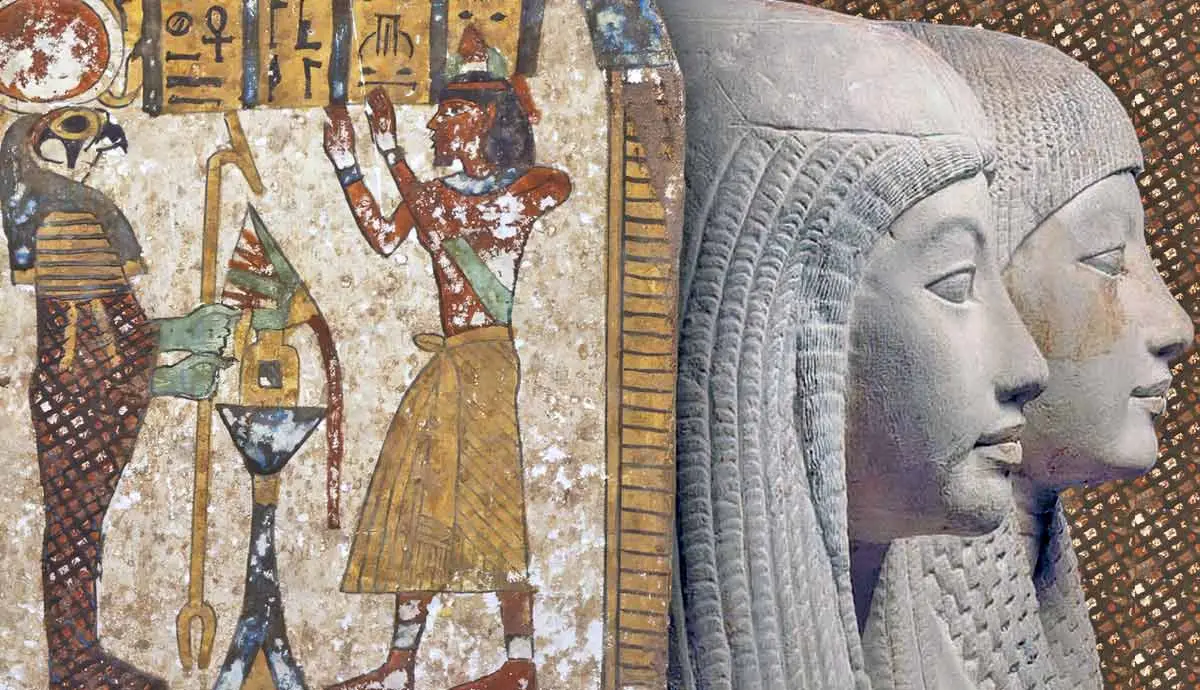
In ancient Egypt the people closest to the gods were the priests. To better understand them, we will journey through a day at the temple of Ra.
The Egyptian priesthood that served Gods such as Anubis and Ra was established in the Early Dynastic Period in Egypt (c. 3150-2613 BCE) but developed in the Old Kingdom (c. 2613-2181 BCE). During this period, priests became immensely powerful, rich, and political, as they represented a check on the power of the pharaoh. Their decline and disappearance came during the 4th century, due to their corruption and the rise of Christianity.
What was a Priest in Egyptian Religion?
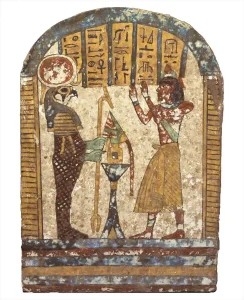
The falcon-headed sun god Re (Ra) is adored by the priest Diefankh, Source: The Gleincarne Museum
The defining feature of an ancient Egyptian priest was his one single duty: To take care of the god of their temple. Compared to priests from other faiths, priests in ancient Egypt did not perform any functions or preach, nor did they convert the unfaithful.
Furthermore, both men and women could take the cloth, and they would perform the same duties and receive the same wages. However, in most cases, women served female gods, while men served male gods. Exceptions were the worship of Serket and Amun, where both genders could worship them. Worshipers of Serket could be doctors, and priestesses of Amun could rise to the position of Wife of Amun, rivaling the king in power and influence.
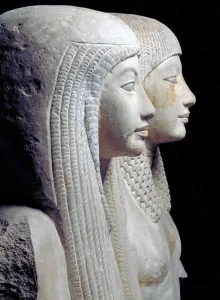
Statue of Maya and Merit, c. 1320 BCE, Source: The Rijks Museum
The high priest was always assigned by the pharaoh. He would perform the most important rituals, was seen as the prime mediator between men and gods, and managed the business of the temple. Consequently, high priests were seen as figures of both political and religious authority.
The driving force of Egyptian religion was the important principle of Ma’at (harmony and balance), maintained by Heka (magic). Heka and its godly personification, according to Egyptian religion predated the creation of the world and the first gods. Every social category in Egyptian society had to respect Ma’at by performing their duties. Priests play a vital role by honoring and caring for the gods daily.
What Types of Priest Were There?
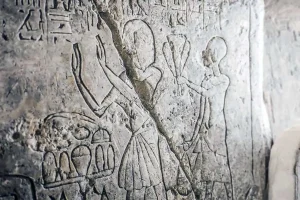
Lintel of Raiay, 19th Dynasty, Source: Londonxlondon.com
By gender, male priests were known as hem-netjer and females as hemet-netjer (servants of the god). The priestly hierarchy started with the lowest tier, wab, and ended with the high priest (hem-netjer-tep). The wab had an auxiliary role taking care of the temple or assisting at or preparing for festivals.
Between the wab and the high priest, everyone who performed a certain activity withing the temple complex, such as kitchen staff, janitors, porters, and scribes were priests due to their relationship with a god. Singers and musicians were required to train with priests to be able to perform their duties. The hour-priests were astronomers whose activity was to keep the calendar, interpret signs and dreams, and decide lucky and unlucky days.
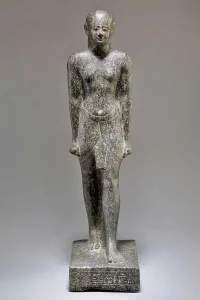
Statue of Priest Harnefer, 4th Century BCE, Source: The Met Museum
The priests who had medical training were known as the swnw (general practitioner) and sau (magical practitioner),trained in both the ways of magic and medicine. A priest paid by a family to perform the daily offerings at the tomb of a deceased relative was known as a Ka-priest (or ka-servant). Sem priests were tasked to preside over mortuary rituals and conducted funeral services. They were the embalmers who performed the mummification of a corpse and recited magic incantations while wrapping the deceased. They were held in high esteem for their service and spells, which would guarantee eternal life to the dead.
Right below the high priest was the lector priest (hery-heb or cheriheb). His tasks were to write down religious text, instruct other clergymen, and recite the “authoritative utterance,” the heka, in the temple or at festivals. As the position of the priest passed down from father to son, we do not have records of female lector priests, although there is circumstantial evidence which proves their existence.
Early Morning Rituals and Awakening the God
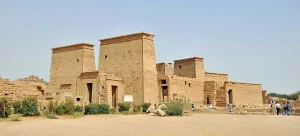
Philae Temple, Aswan Egypt, photo by marc Ryckaert, 2012, Source: Wikimedia Commons
Ancient Egyptian priests started their days like everyone else. They got up and dressed, getting ready for a new day. However, all priests were expected to be ritually pure, which meant three main things. First, after dressing up, priests had to shave off all the hair on their bodies, even their eyebrows and eyelashes. Furthermore, every third day, they underwent a hair removal procedure to keep their bodies incredibly smooth.
Second, they were required to bathe several times daily in the temple’s sacred lake to remain as clean and pure as possible. Finally, they gargled with natron salt solution before dressing in linen robes and reed-woven sandals. They always wore white linen clothes as a sign of purity. All of this happened right before the dawn. After these preparations, the first ritual of the day took place. Known as the Fire Ritual, it gathered all priests in a sacred room close to Ra’s shrine to re-enact the first sunrise by lighting a fire in a brazier.
Once the sun was up, a priest had to prepare to sing a morning hymn, “Awaken in Peace, Great God,” which as the name suggests, was meant to awaken their sacred god, Ra. The next ritual, Drawing the Bolt, had the senior priest walk right to the center of the temple. Here, he unsealed the sanctuary doors, and performed a ritual prayer four times over the image of Ra. This ritual represented an exchange, where the priest gave his soul so the god could take a new earthly physical shape. After awakening the god, it was time for breakfast.
After breakfast, priests sprinkled water over the sanctuary and the image of Ra. They left by saying a final prayer and sealing the doors of the sanctuary. At noon, the high priest re-entered the shrine, this time burning myrrh resin while sprinkling water to further purify the temple’s shrines and sacred spaces.
Afternoon and Leisure
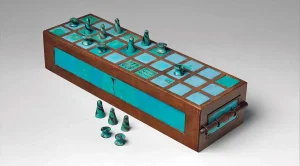
Game board and gaming pieces, ca. 1550–1295 BCE, Source: The Met Museum
In the afternoon, all the priests would sit down for lunch. It consisted of pea and lentil soup and was accompanied by fresh bread. Then, they were allowed some free time to rest or enjoy leisure activities. It could be an afternoon nap, meditation, or a round of board games.
Senet is one of the most famous Egyptian board games. We do not know the game’s rules, but several historians have attempted to recreate them, such as Timothy Kendall and R.C. Bell, based on fragments of texts spanning over a thousand years. Another board game, Hounds and Jackals, was played with two players. The gaming board has two sets of 29 holes. Gaming pieces were ten small sticks with jackal or dog heads. Both players would take five pieces each and had to start from one point on the board. The aim of the game was to get from one point and reach another point on the board, with all pieces. The slightly enlarged hole on the top of the board was likely the endpoint for the players.
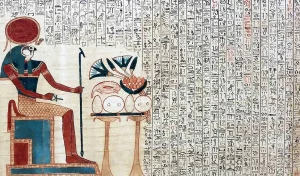
Detail of the Book of the Dead of Queen Nedjmet, 1070 BCE, Source: the-past.com
After their pleasure time was over, Egyptian priests would officiate a funeral march in the afternoon when a nobleman or anyone important passed away. A priest would also oversee the funeral procession. He would board the barge carrying the coffin as it sailed across the Nile and accompany it to the tomb, where he said his final prayers. The coffin was sealed by the masons. As mentioned above, the priest would also mummify the deceased.
There is evidence that people came to the temple for help with medical, financial, and emotional needs as well as to request protection against evil spirits or ghosts, and it is also clear they would bring offerings to the temple in gratitude for prayers answered. For the most part, however, the people of Egypt interacted with their gods privately or during the many festivals held throughout the year. The priests served the gods, not the people.
Evening and the Egyptian Religion
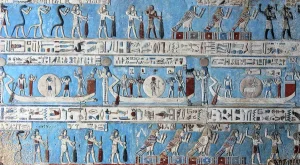
A detail from the astronomical ceiling at the Dendera temple in Egypt, Source: theconversation.com
In the evening, priests had to bathe again before re-entering the gods’ presence to maintain ritual purity. Since priests were required to bathe twice a day and twice a night, a fourth and final bath was taken to consecrate their ritual purity. Meanwhile, the hour-priest astronomers observed the night sky from their dedicated area on the temple floor.
In a reversal of the morning ritual, the high priest returned to the sacred shrine within the sanctuary of the temple to put the god’s spirit to rest. He would burn spicy kyphi incense to create a calm environment. As the day ended, the priests would perform their final ritual, eating dinner, and going straight to bed to prepare for the next day.